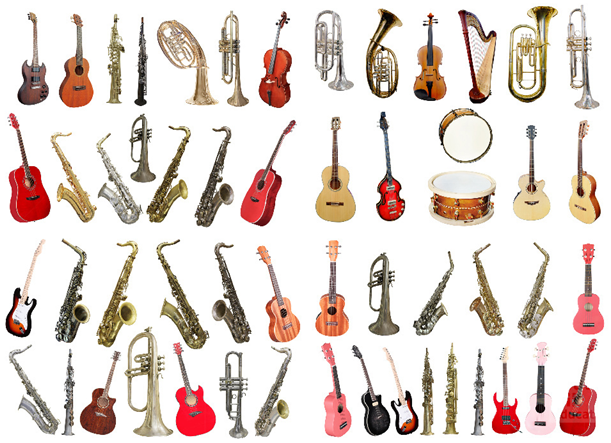Traditionally, the lowest-pitched (bass) instruments have provided the rhythmic foundation in musical ensembles. Researchers from McMaster University, Hamilton, Ontario, Canada, reporting in the Proceedings of the National Academy of Sciences (June 2014), have discovered why. They found that the human brain perceives changes in rhythm more quickly at lower frequencies. This finding complements their earlier results indicating that the highest-pitched instruments are best suited for recognizing melodies. See also: Acoustics; Brain; Pitch

In music, rhythm, also known as the beat, pulse, or, more informally, the groove, is the glue that holds a performance together. It needs to be steady and accurate. In musical ensembles, low-pitched instruments associated with carrying the beat include the bass guitar, double bass, drums, and piano (lower keys), most of which are played in the frequency range of 40 and 200 hertz (Hz). In contrast, the highest notes of a piano and violin are around 4200 Hz. To put this in perspective, adult humans can hear from about 50 to 16,000 Hz. Rhythm instruments therefore typically play in the very bottom range of human hearing, in contrast to those playing melodies. See also: Hearing (human); Musical instruments
In the study, the researchers simultaneously played two piano tones—one of lower frequency (G at 196.0 Hz) and one higher (B-flat at 466.2 Hz)—that repeated every 500 milliseconds (ms), occasionally playing the lower or higher tone 50 ms early. In one instance of the study, using electroencephalography, the researchers recorded the auditory-cortex response of the listeners. In a second instance of the study, listeners tapped their fingers along with the beat and the researchers measured the time it took the listeners to adjust to timing shifts of the lower or higher tone. In both case, the listeners were better able to follow changes in rhythm at the lower frequency. See also: Electroencephalography; Musical acoustics; Physiological acoustics; Psychoacoustics; Sound; Tone (music and acoustics)





